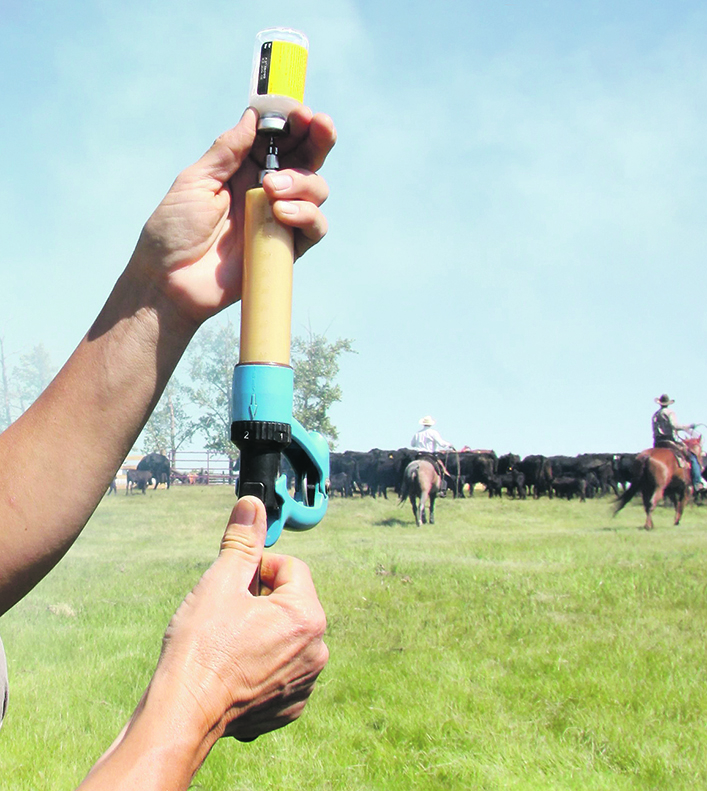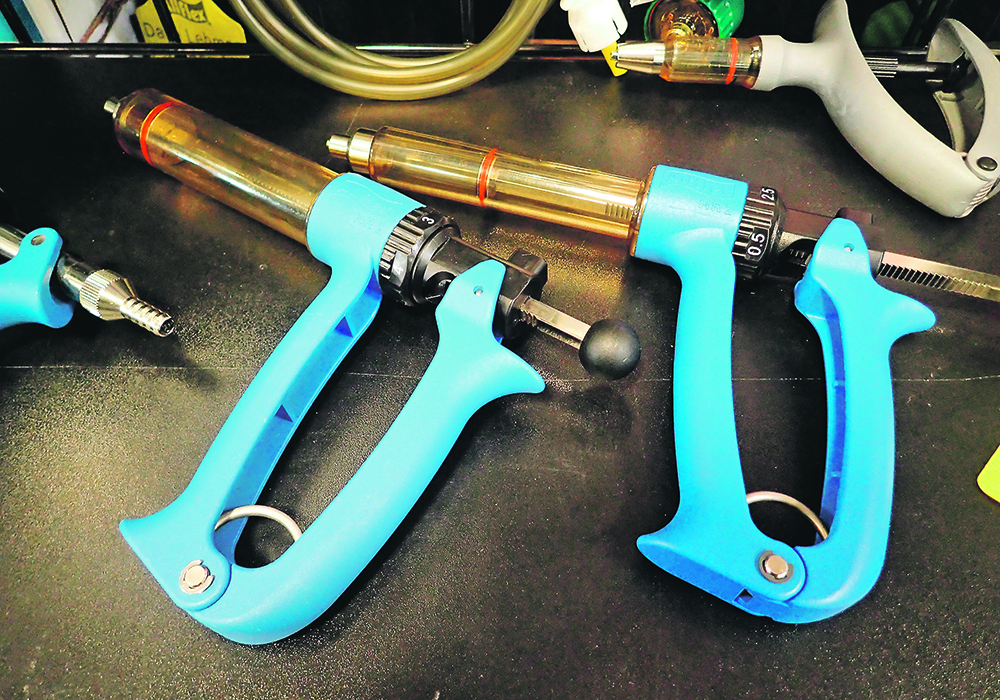Vaccines are among the most effective disease management tools producers have, as long as they are used correctly
Cattle producers and veterinarians should develop vaccine protocols specific to their operations to manage disease risk, says Dr. Joyce Van Donkersgoed.
The beef cattle veterinarian from southern Alberta said vaccines are among the most effective disease management tools producers have, as long as they are used correctly.
“Vaccination is only one aspect of disease control,” she told a webinar hosted by Saskatchewan Agriculture. “There is no such thing as a silver bullet to reduce infectious disease.”
When done properly, vaccination can minimize the risk. However, producers aren’t always aware that “the simplest little thing” can affect the vaccine itself and how it works.
“Then you’ve wasted a lot of money and your (cattle) are at increased risk of disease,” she said.
She, along with industry stakeholders such as producer organizations and pharmaceutical companies, is working on a project funded by the Beef Cattle Research Council to improve vaccine use in western Canada.
Van Donkersgoed said standard industry-wide protocols don’t work as well as custom protocols for individuals because each operation is different. Vaccines are different and cattle respond to them differently.
But the project aims to generate herd immunity by getting a good response with at least 80 percent of the animals, she said.
The group has recommended several vaccines that should be considered core to any western Canadian operation. These are based on information from the American Veterinary Medical Association.
The viral diseases were selected because infections are endemic, are virulent or highly infectious, and pose a significant risk. There is also a potential public health risk.
They include infectious bovine rhinotracheitis, commonly called red nose or IBR, bovine viral diarrhea, and bovine respiratory syncytial virus. By default, parainfluenza 3, or PI3, vaccine is usually included with IBR and indirectly becomes part of the core group, said Van Donkersgoed.
For bacterial diseases, clostridial vaccines other than c. hemolyticum and c. tetani are recommended. Van Donkersgoed said the Canadian group debated whether the two should be included but decided to leave the list as the AVMA had set it.
Other vaccines would be considered risk-based. Van Donkersgoed said in this case it is important to look at the cost-benefit of using them.
None of the vaccines offer life-long protection from disease and animals will require booster doses. Reading the directions is critical and the vaccine protocol should list when the boosters are due, she said.
Antigen overload is a concern; too many vaccines should not be administered at once or the animal won’t respond as well to the individual vaccines.
Van Donkersgoed said the protocol should include the type of cattle to be vaccinated, when, dose, route (intramuscular, subcutaneous or intranasal), the location of the injection, withdrawal times and any other comments.
It is incumbent on veterinarians, who dispense the vaccines, to understand the operation, the disease risk and help determine the best way to proceed.
“That is their responsibility,” she said.
The protocol should be reviewed every year as many things could have changed.
Some branded programs have certain requirements, as does export to the European Union, for example.
There could be new vaccines on the market that might be better suited to the operation.
Veterinarians can also advise on when to use modified live or killed vaccines and on which animals.
Van Donkersgoed said ranchers often complain that they can’t read the tiny print on vaccine bottles. She suggested they use the free Compendium of Veterinary Products app, which contains all the information on the vaccines and enlarge the print on their phones.
No matter which vaccines are used she said their effectiveness depends on how they are handled.
“Don’t freeze it and don’t cook it,” she said. “We want to keep them cool at all times.”

This includes during transport and while they are in use. Even leaving a bottle in a truck tailgate in the sunlight during vaccination will degrade the vaccine.
Ideally, the veterinarian will provide the vaccines in a cooler with frozen ice packs. The bottles should not sit directly on the ice packs but be separated by a layer of bubble wrap or paper.
The cooler should be put in the truck cab, not the box, and when arriving at home the vaccines should be taken out and put into the fridge.
Modified live viral vaccines are only good for one to two hours once out of the fridge and mixed. Some are good for eight to 10 hours. Clostridial vaccines should be used up the same day.
Van Donkersgoed said proper restraint to ensure the full dose of a vaccine is administered in the neck area, or in the nose, is also important. Vaccinating in the alleyway is not a good idea because there is increased risk to human safety and potential for broken needles and leaking.
“Ideally, if you’ve got a lot of cattle, it’s worth the investment to have a chute to vaccinate your cattle,” she said.
She said repeater syringes or draw-off syringes are best and does not advocate bottle top syringes for vaccines because they are not as accurate when it comes to dosing.
Van Donkersgoed added the training videos should be available on the BCRC website within a few weeks. Other extension tools, including fact sheets on the core diseases and a herd questionnaire that can help with the annual updates, are also coming.
















